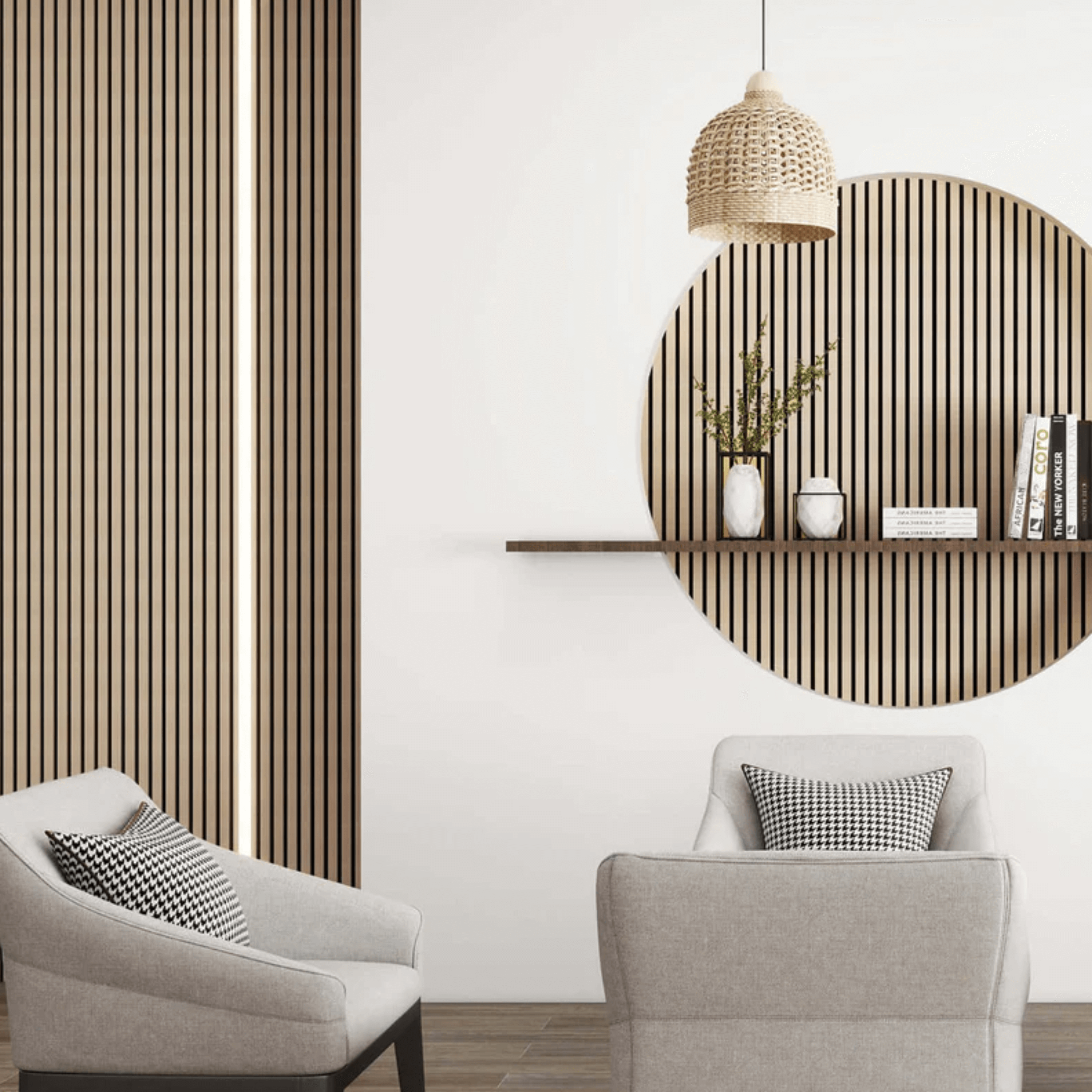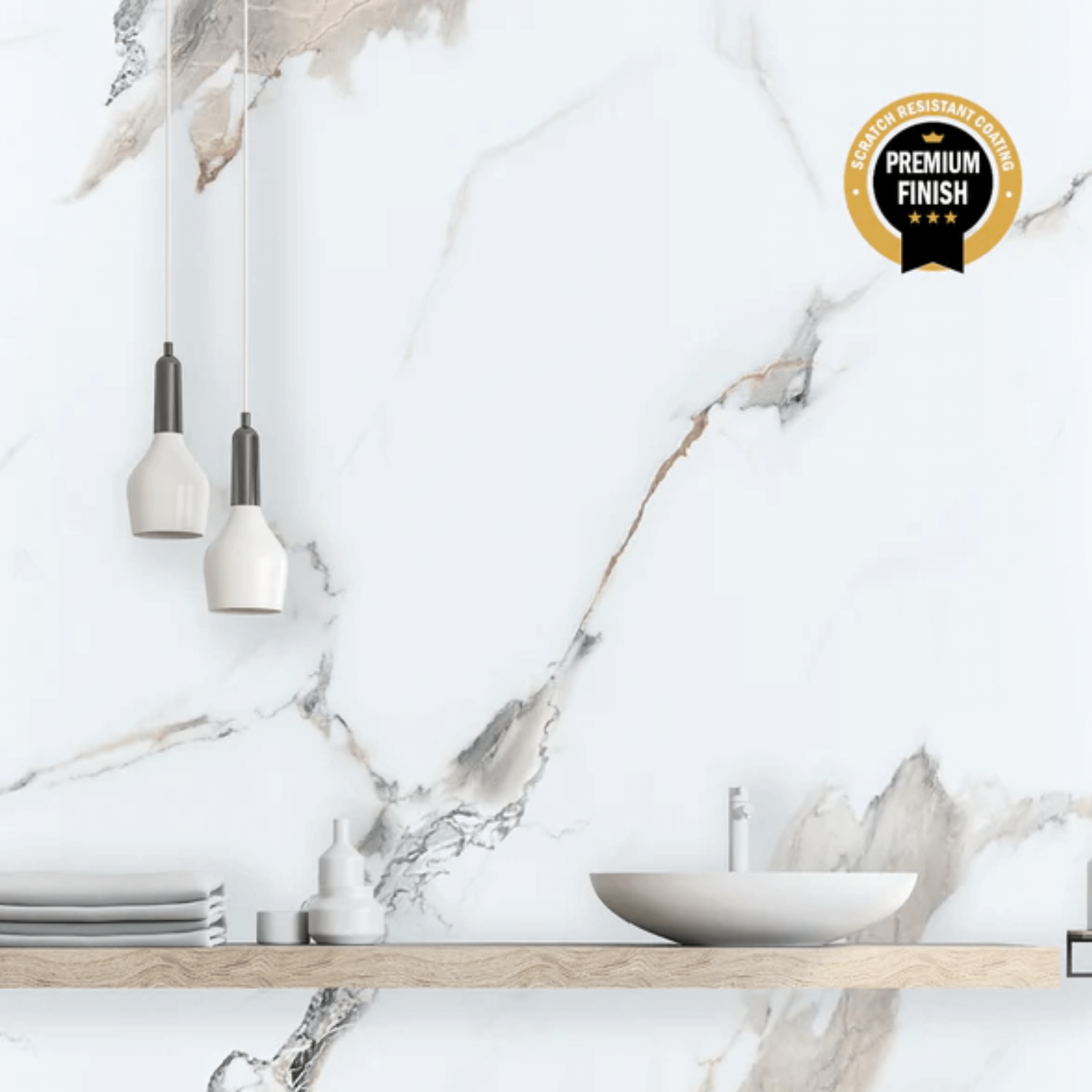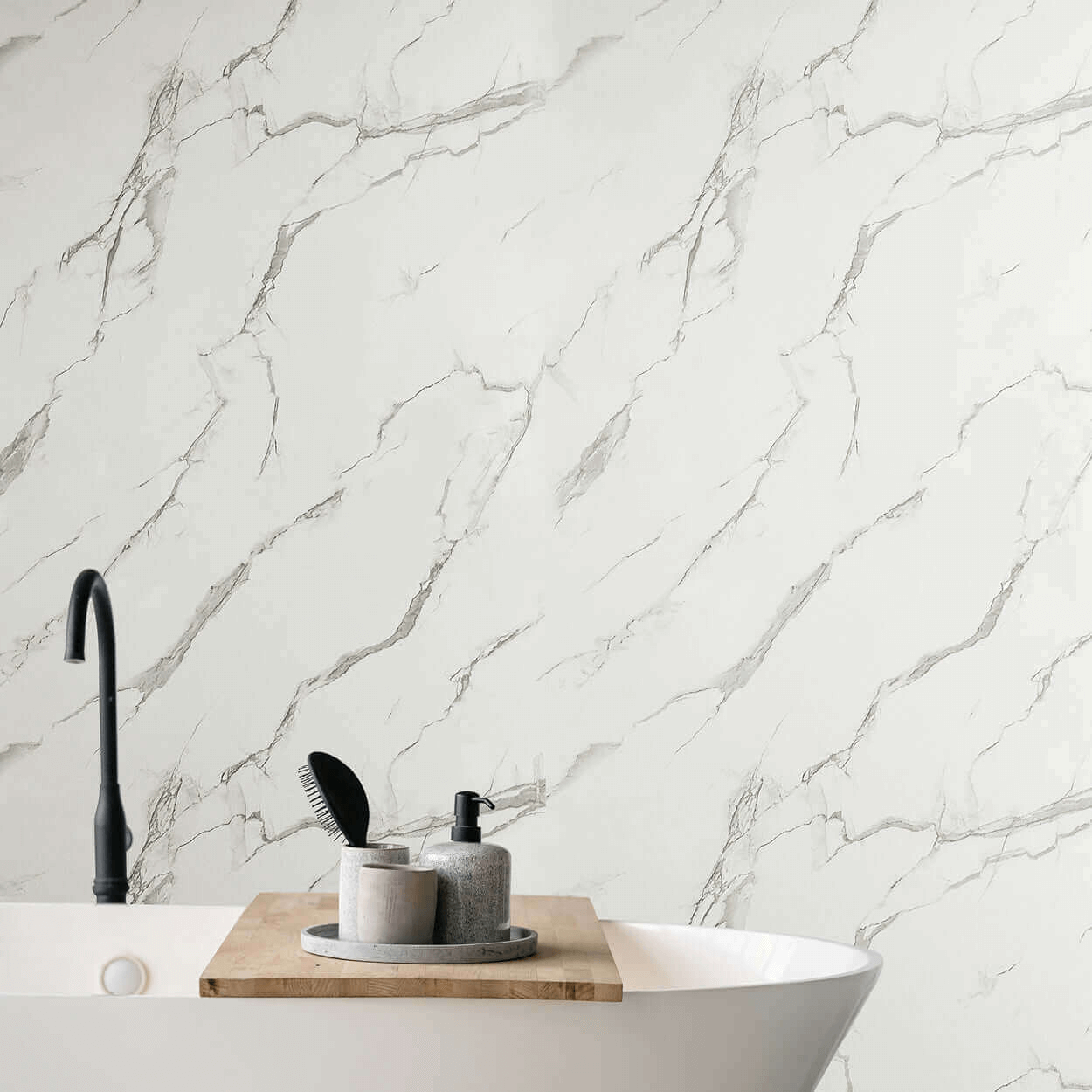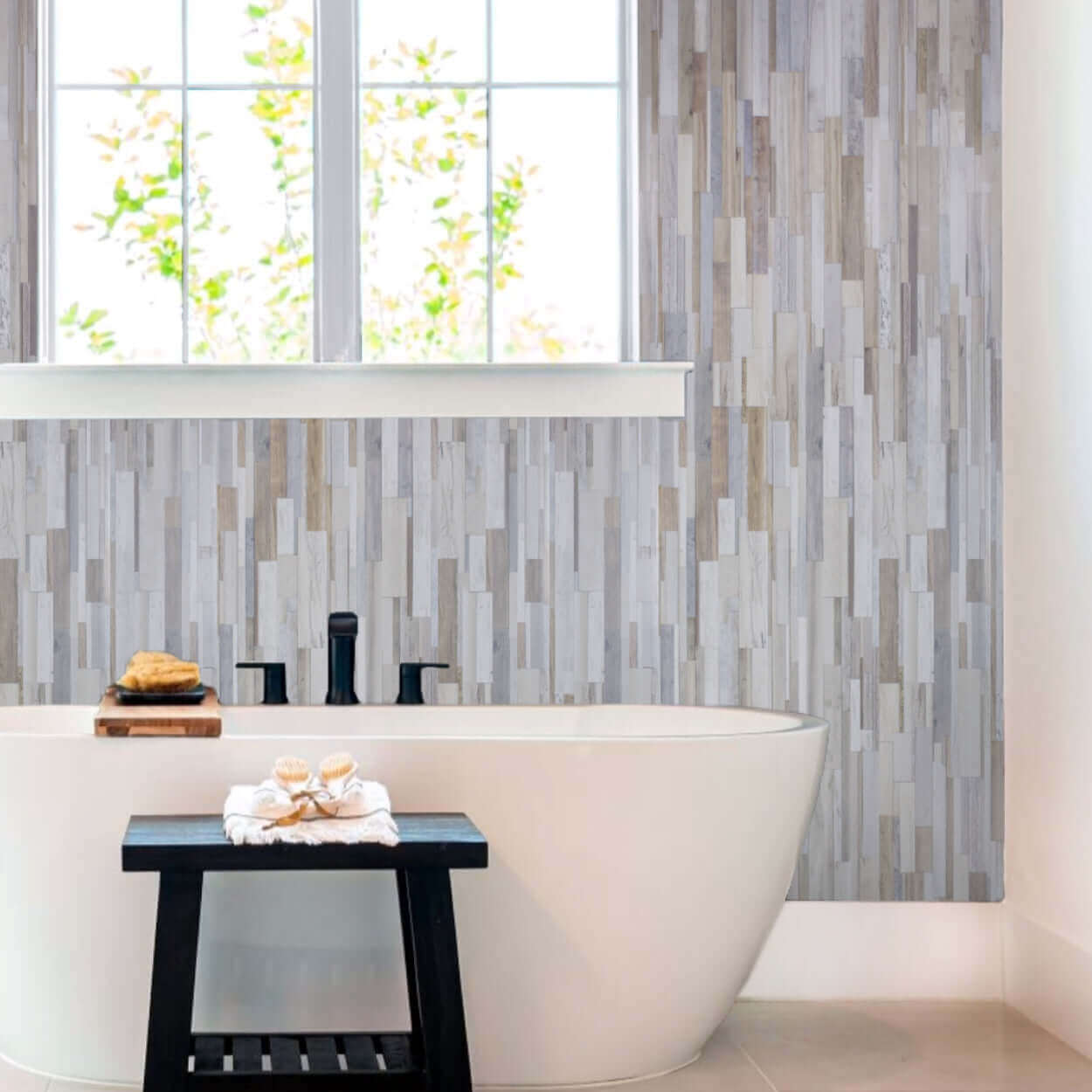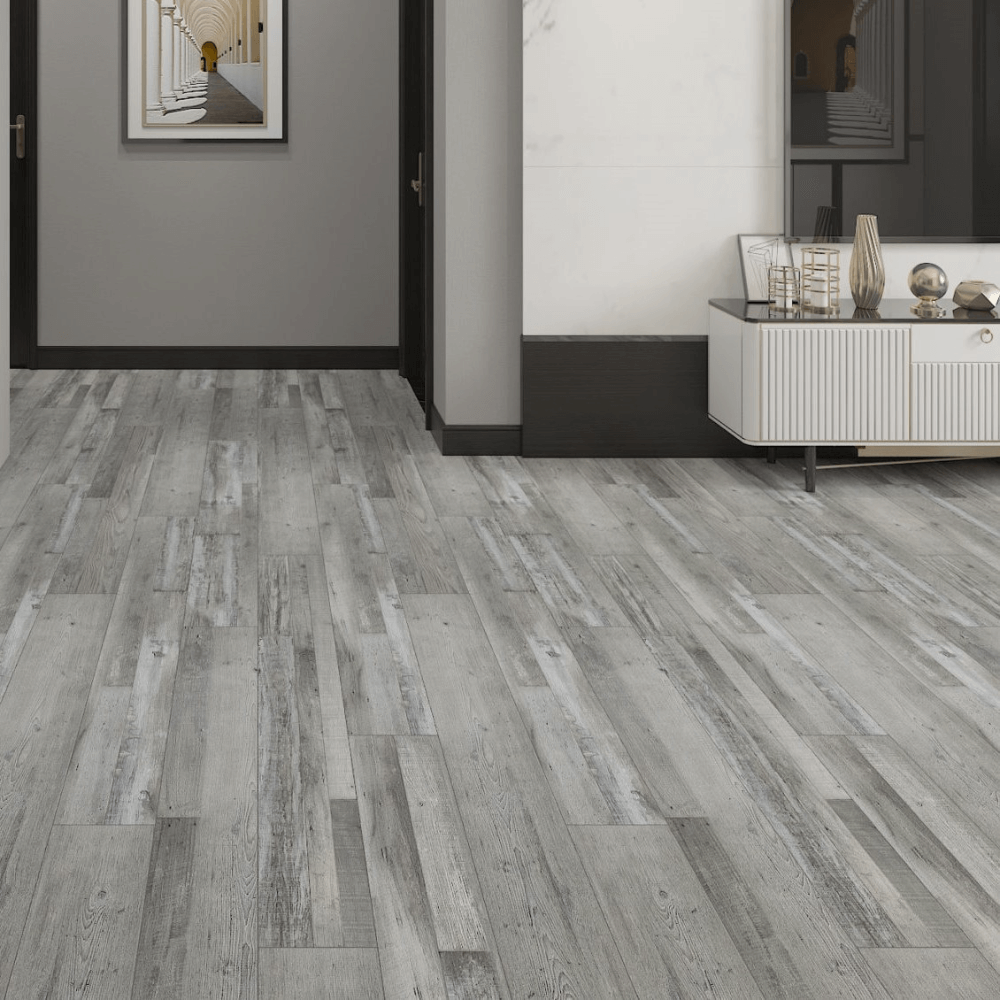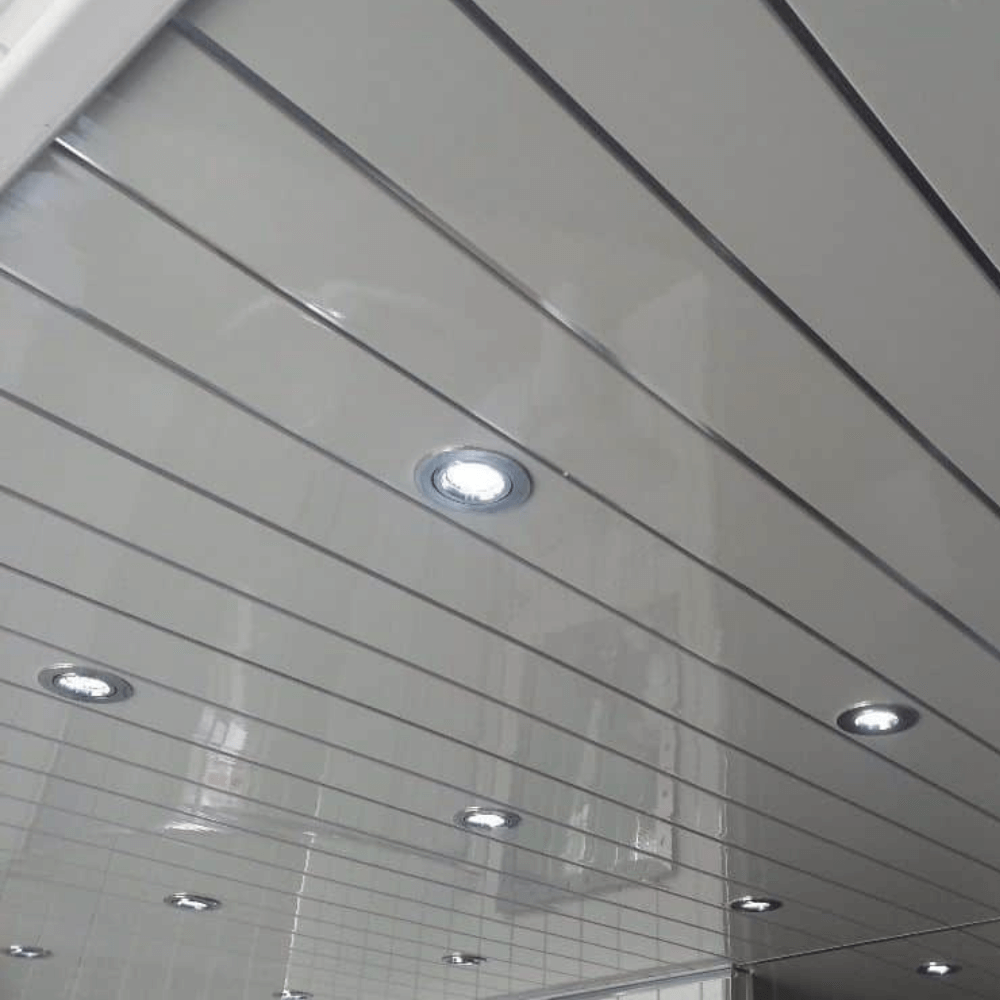Wall panelling has become a defining feature in UK interior design, offering a straightforward way to add character and depth to any room. But with different styles available, choosing the right one can feel daunting. Two of the most popular options are tongue and groove and slat wall panels, each with a distinct structure and purpose.
Defining the Core Panel Styles
To make the right choice, it helps to understand the fundamental difference between these two styles. Tongue and groove wall panels are designed with an interlocking system. One edge has a protruding ridge (the 'tongue') that fits perfectly into the recess (the 'groove') of the adjoining panel. This creates a continuous, seamless surface that feels uniform and connected.
In contrast, slat wall panels are defined by their distinct linear strips. These panels feature a series of slats with deliberate gaps between them, producing a three-dimensional, textured effect that adds architectural interest. While traditional options are often wood or MDF, modern interpretations have expanded their use. For instance, our Aquaguard range offers a contemporary, waterproof slat design, making it suitable for almost any room in the house.

Aesthetic Appeal and Design Impact
Beyond their physical construction, each panel style brings a unique visual language to a space. The choice between them often comes down to the atmosphere you want to create.

The Classic Cohesion of Tongue and Groove
The seamless finish of tongue and groove panels lends itself to calm, cohesive aesthetics. Think of the clean lines in a Scandinavian-inspired living room or the comforting backdrop in a modern country kitchen. Because the joints are almost invisible, this style creates a sense of unity, making a room feel complete and thoughtfully designed. It’s a timeless choice for those who appreciate understated elegance.
The Dynamic Texture of Slat Walls
Slat walls are all about making a statement. The vertical or horizontal lines introduce a strong architectural element, creating a bold feature that draws the eye. The gaps between the slats play with light and shadow, adding a sense of depth and dynamism that flat walls lack. This makes them a powerful form of decorative wall cladding for contemporary spaces.

Matching Panels to Your Interior Theme
So, which is right for your home? If you’re aiming for timeless elegance or a subtle backdrop that complements your decor, tongue and groove is an excellent choice. For those wanting to inject personality into modern, industrial, or minimalist spaces, slat walls provide that essential focal point. While both styles can be painted, the structure of modern interior wall panels like slats allows for creative additions such as integrated lighting. A sophisticated finish can further enhance the look, and exploring options like our matt wall panels collection can provide a refined, contemporary touch.
Installation and Practical Considerations
Aesthetics are important, but practicalities like installation and maintenance are what make a project successful. For many UK homeowners, the ease of fitting is a major factor.
Tongue and groove wall panels are often considered one of the best easy wall panelling ideas, especially for those new to DIY. The interlocking system is forgiving, as each panel naturally aligns with the next, helping you achieve a professional-looking finish with less fuss. In contrast, slat walls demand more precision. Achieving perfectly even spacing and ensuring every panel is level is key to avoiding a wonky, unprofessional result.
Maintenance also differs. The smooth, continuous surface of T&G panels is simple to wipe clean, making it ideal for busy areas. The gaps in slat walls, while visually appealing, can gather dust over time and require more attention to keep them looking their best. Different types of panelling have unique benefits tied to their function. This is especially true in high-moisture environments like bathrooms, where waterproof PVC tongue and groove options excel. For these spaces, high-quality shower panels are an excellent, purpose-built solution.
Factor |
Tongue & Groove Panels |
Slat Wall Panels |
Installation Ease |
More forgiving for beginners |
Requires more precision |
Cleaning & Maintenance |
Simple wipe-down surface |
Gaps can collect dust |
Best For Wet Areas |
Excellent (especially PVC) |
Not recommended (unless specified) |
Primary Benefit |
Creates a seamless, cohesive look |
Adds texture and architectural depth |
Note: This table provides a general comparison. Always check the specifications of the exact product, as modern materials like waterproof slat panels are now available.

Best Use Cases in a UK Home
To help you visualise these styles in your own space, let’s look at some specific applications. Tongue and groove panels are perfect for wrapping an entire room, such as a bedroom, to create a cosy, cocoon-like feel. They also add durability and character to high-traffic hallways or boot rooms.
Slat walls, on the other hand, are ideal for creating high-impact feature walls. Imagine one behind a sofa in the living room or as a headboard in the bedroom. This is a particularly popular use for Slat wall panels UK, as it adds a touch of boutique hotel style. These panels can also subtly influence the perception of a room; horizontal T&G can make a narrow space feel wider, while the depth of slat walls adds dimension. For projects where sound dampening is a priority, such as a home office or media room, exploring our dedicated acoustic panels is a great starting point for functional and stylish wall panels for interiors.
Still unsure? Ask yourself these simple questions:
- Am I covering a whole room or creating one feature wall?
- Is the area prone to moisture, like a bathroom or kitchen?
- What is my DIY confidence level for the installation?
- Is my primary goal a seamless look or a textured, architectural feature?
Your answers should point you towards the perfect panel for your project. To see all the possibilities, feel free to browse the full range of styles on our website.




